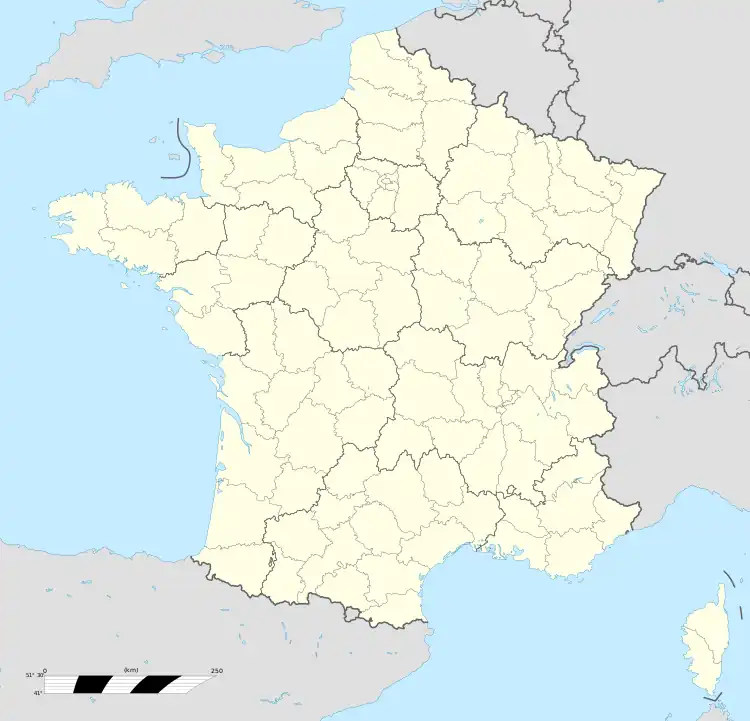Carla-Bayle
Carla-Bayle is a commune in the Ariège department in southwestern France. It was the birthplace of Pierre Bayle (1647–1706), a Protestant philosopher and writer known for his works on religious toleration and his early encyclopedia.
Carla-Bayle | |
|---|---|
 Town hall | |
.svg.png.webp) Coat of arms | |
Location of Carla-Bayle | |
 Carla-Bayle  Carla-Bayle | |
| Coordinates: 43°09′05″N 1°23′39″E | |
| Country | France |
| Region | Occitania |
| Department | Ariège |
| Arrondissement | Saint-Girons |
| Canton | Arize-Lèze |
| Government | |
| • Mayor (2023–2026) | Jean-François Sans[1] |
| Area 1 | 35.52 km2 (13.71 sq mi) |
| Population | 797 |
| • Density | 22/km2 (58/sq mi) |
| Time zone | UTC+01:00 (CET) |
| • Summer (DST) | UTC+02:00 (CEST) |
| INSEE/Postal code | 09079 /09130 |
| Elevation | 236–411 m (774–1,348 ft) (avg. 396 m or 1,299 ft) |
| 1 French Land Register data, which excludes lakes, ponds, glaciers > 1 km2 (0.386 sq mi or 247 acres) and river estuaries. | |
History
Originally named Carla-le-Comte, the commune became a center of Protestant activity in the 16th century before the government suppressed it. Protestant philosopher and writer Pierre Bayle was born there, and was taught in his early years by his father, a Protestant minister. He briefly converted to Catholicism, before reverting to the Protestant Reform faith. His rejection of Catholicism led to his need to leave France. Later the government oppressed Protestants, who remained the majority in Carla. A Protestant strong point it was besieged by the royal army and its walls and chateau demolished.
During the revolution the commune was renamed Carla le peuple. After the monarchy was restored it was renamed Carla-Bayle in honor of Pierre Bayle. There is a museum devoted to Bayle and is home to many galleries and a number of artists.
The rural community reached its peak of population at 2030 in 1851, had declined by 1982 to 469, increased to 745 in 2008.
Population
|
|
References
- "Répertoire national des élus: les maires" (in French). data.gouv.fr, Plateforme ouverte des données publiques françaises. 6 June 2023.
- "Populations légales 2020". The National Institute of Statistics and Economic Studies. 29 December 2022.